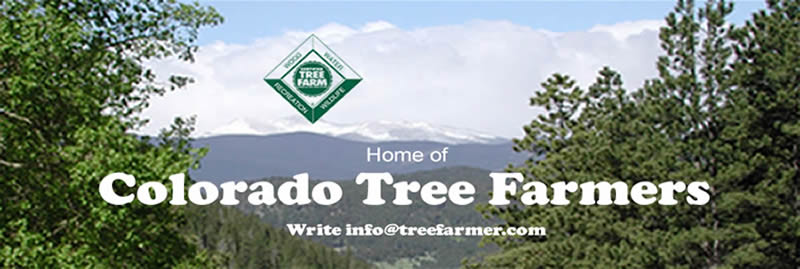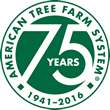| Be confident that what you do in your forest will improve it's health and sustainability for future generations. Become a Tree Farmer! |
|||
| Tree Farmer Alert | |||
| Monday, July 3 , 2017 Over 800 readers and growing! |
|||
What's in your Woods?Be a winner in the Wisest Woodcutter contest by choosing the most correct answers in "Whats in your Woods?" over the next year. See details.
|
|||
Field Trip!
|
|||
|
We are hosting a gathering that brings together Extension forestry specialists from all western states.The meeting theme will involve cross-boundary forest health- wildfire risk management programs of work. This involves private and public land owners/managers, discussing how knowledge exchange, science delivery, and technical assistance has worked in “cohesive wildland fire management strategies.” Free lunch but limited space available.
|
|||
Lightningcontributed by Molly Pitts, Colorado Timber Industry Association
|
|||
The electrical potential in a lightning strike can be as much as 100 million volts. Lightning strikes can occur over distances as great as 60 km (40 mi). Lightning travels both in front of and behind a thunderstorm
|
|||
Local company puts waste wood to workcontributed by Terry Shetler, forest landowner
|
|||
Biochar Now's product has a variety of uses, Gaspard said. Added to the soil, it holds and slowly releases water and fertilizer and dramatically increases yields, he said. Dropped into algae-choked lakes in long cloth "socks," it sucks up the excess phosphorus in the water and starves the algae. The negatively charged carbon also attracts and holds heavy metals such as arsenic and lead and is used to clean up water in mine-reclamation work. And the biochar effectively removes mercury from the smokestacks of coal-fired power plants, he said.
|
|||
Why fighting wildfires often fails -- and what to do about itcontributed by Steve Goodroad, Tree Farmer
|
|||
Fighting wildfires in America cost federal agencies almost $2 billion last year including more than half the budget of the U.S. Forest Service. Wildland fires are growing worse in a time of drought and climate change, and the biggest and most destructive fires can't be stopped. They are a force of nature: imagine trying to stop a hurricane. Yet the government has to try, because more than a 100 million Americans now live in -- or near -- forests and grasslands that can erupt in flames.
|
|||
Beekepers lost 33% of honeybee colonies last year
|
|||
It seems as if there is a new glimmer of hope for the American honeybee population, as a new nationwide survey shows that beekeepers across the United States lost 33 percent of their honeybee colonies during the year between April 2016 and April 2017.
|
|||
Spraying for pine beetle may be boon for another pestby Pete Wadden, the watershed education coordinator for the town of Vail
|
|||
It is a relief to many in Colorado that the recent epidemic of mountain pine beetle infestations has now ended. After killing approximately five million acres of trees and dominating headlines for a decade, new infestations have not been seen in Vail for several years. This does not mean that residents of Eagle County are no longer concerned about their trees. Unfortunately, preventative spraying of trees has not stopped since the beetle has moved on. This spraying has several unintended consequences and may even be causing a whole new epidemic of infestations from another kind of tree pest.
|
|||
If this email was helpful,
|
|||




 the road, behind the green and white Tree Farm signs and we care about what's happening in our forests.
the road, behind the green and white Tree Farm signs and we care about what's happening in our forests.